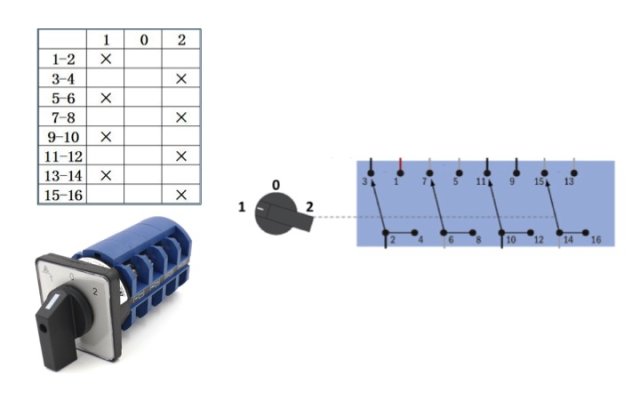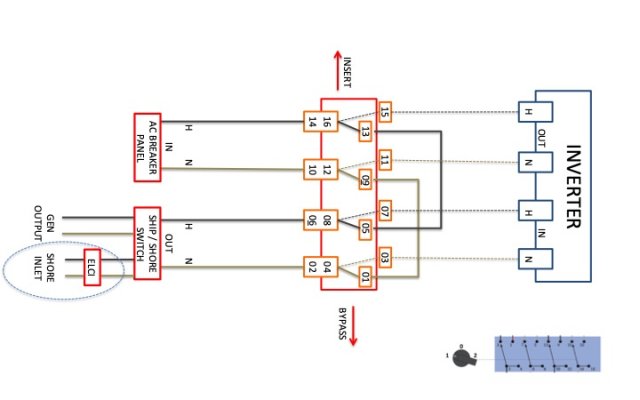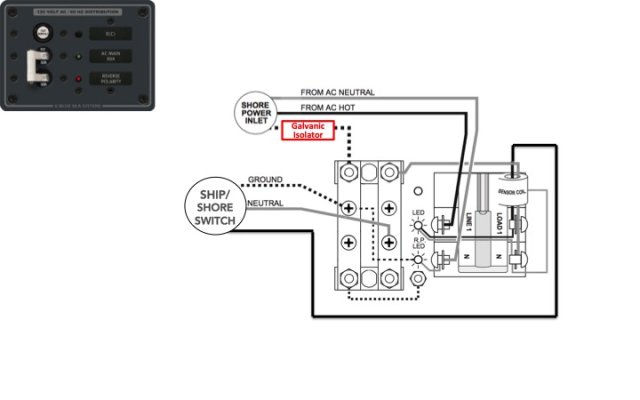warfdog
Veteran Member
- Joined
- May 21, 2018
- Messages
- 96
- Location
- USA
- Vessel Name
- Voyager
- Vessel Make
- Universal 39' Europa Trawler
I also wanted to be able to bypass my inverter and completely isolate it on both hot and neutral legs. In the prior configuration the shore power was routed to the shore/gen switch which then switched it to the panel main input. The Inverter was always in the path of shore or gen power.
I have been changing over my 30A/120V AC panel to - with an inverter bypass switch and ELCI added to provide greater safety and the ability to isolate the Inverter from the circuit when desired.
While I did a lot of reading prior to adding the ELCI and bypass switch I AM NOT AN EXPERT IN THIS AREA.
The shore/gen switch remains but an ELCI sits in front of it before the shore power input. The Inverter bypass switch which two positions (NORMAL=hot and neutral connect to/from Inverter) (BYPASS=both input and output of Inverter are disconnected and completely isolated). The Invertor can still contain 120V AC at any time since it is connected to the house DC bus.
Shore ground (green) passes thru a galvanic isolator then to the ELCI bus - Panel bus - Inverter input and output (unswitched) - Inverter and Charger chassis - Engine Ground - and house negative bus (at panel). All ground-bonding wires are appropriately sized based on the largest AC or DC connection on the device.
The Inverter bypass switch is a reversed 240V cam switch typically used in industrial applications, but sold by Blue Sea as a shore cutover switch Blue Sea 9093 (List $443.99) except it is $30 here: https://www.amazon.com/gp/product/B01G9VY1HG/. The ELCI is from Blue Sea. Model 8100.
In this configuration I get the ability to isolate the Inverter from the AC circuits, diagnose any problems with common and ground circuits, and continue to use the Inverter/Charger functions at any time. The Inverter stays in the circuit under most conditions.
Is this what you are looking to do?
I have been changing over my 30A/120V AC panel to - with an inverter bypass switch and ELCI added to provide greater safety and the ability to isolate the Inverter from the circuit when desired.
While I did a lot of reading prior to adding the ELCI and bypass switch I AM NOT AN EXPERT IN THIS AREA.
The shore/gen switch remains but an ELCI sits in front of it before the shore power input. The Inverter bypass switch which two positions (NORMAL=hot and neutral connect to/from Inverter) (BYPASS=both input and output of Inverter are disconnected and completely isolated). The Invertor can still contain 120V AC at any time since it is connected to the house DC bus.
Shore ground (green) passes thru a galvanic isolator then to the ELCI bus - Panel bus - Inverter input and output (unswitched) - Inverter and Charger chassis - Engine Ground - and house negative bus (at panel). All ground-bonding wires are appropriately sized based on the largest AC or DC connection on the device.
The Inverter bypass switch is a reversed 240V cam switch typically used in industrial applications, but sold by Blue Sea as a shore cutover switch Blue Sea 9093 (List $443.99) except it is $30 here: https://www.amazon.com/gp/product/B01G9VY1HG/. The ELCI is from Blue Sea. Model 8100.
In this configuration I get the ability to isolate the Inverter from the AC circuits, diagnose any problems with common and ground circuits, and continue to use the Inverter/Charger functions at any time. The Inverter stays in the circuit under most conditions.
Is this what you are looking to do?
Attachments
Last edited:



